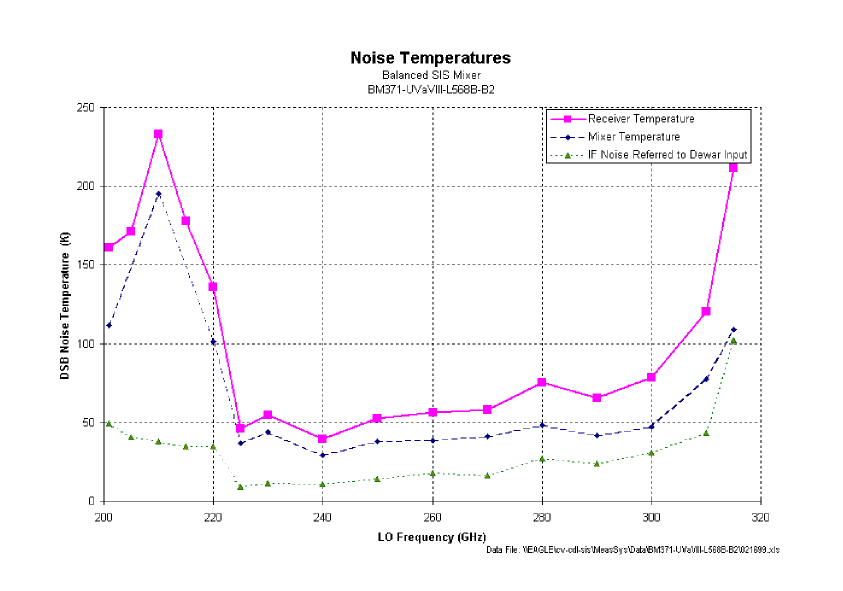In spectral line measurements, atmospheric noise in the unwanted sideband can be eliminated by using an image separating scheme. At the 12-m telescope, the antenna temperature at the zenith is typically 60K at 230 GHz. For a good SIS receiver, eliminating the noise in the image band would decrease the overall system noise by about 30%, thereby halving the integration time required to attain a given sensitivity. Since we would like to use such a system on the MMA as well, we need a system which has wide IF bandwidth and requires no mechanical tuning. We have chosen to usea phasing type image separating mixer to achieve this goal. Such a mixerhas been designed by NRAO and fabricated by JPL on a 1 x 2 mm quartz chip,as shown below. The chip contains an input quadrature hybrid, an LO power splitter, LO couplers, and two broadband SIS mixers. The two IF outputs are combined in an IF quadrature hybrid (not on the mixer chip), at whose output connectors the downconverted upper and lower sideband signals appear separately.

Initial test results for single-sideband noise temperature and sideband separation are shown below.


On the wafer containing this mixer, the terminating resistors on the wafer from which this mixer was fabricated were 70 ohm rather than 50 ohm terminations due to the difficulty of process control for very thin layers. In addition, there is some LO leakage underneath the chip which results in the LO phases not being exactly right and thus degrades the sideband separation. Nevertheless, the results are excellent, with more than 9 dB image rejection across the band and noise temperature comparable to that of a single mixer element. Another wafer is in process which is expected to have the correct terminating resistance, and a new mounting block has been designed which allows insertion of appropriate microwave absorber material to reduce the waveguide mode coupling. This should result in much improved performance over the first prototype.
A balanced mixer for 200-300 GHz has been designed. Like the sideband separating mixer, it uses two single mixers to build on a single chip a mixer which will require 17 dB less LO power than a single-ended design. It will also greatly reduce the contribution of LO noise to the receiver noise. This will make design of a good LO system much easier. A diagram of the balanced mixer is shown below.

A prototype of the balanced mixer has been assembled and tested, and the results are shown in the plot below. This particular mixer chip was tuned slightly higher than the target band of 211-275 GHz, but it works well.

In collaboration with S. Weinreb at the University of Massachusetts, we have begun the design of an integrated IF amplifier which will permit the MMA goal of 8 GHz instantaneous bandwidth per sideband to be realized. The MMIC amplifier chip employs a grounded gate first stage and is expected to give good performance over the 4-12 GHz target band.